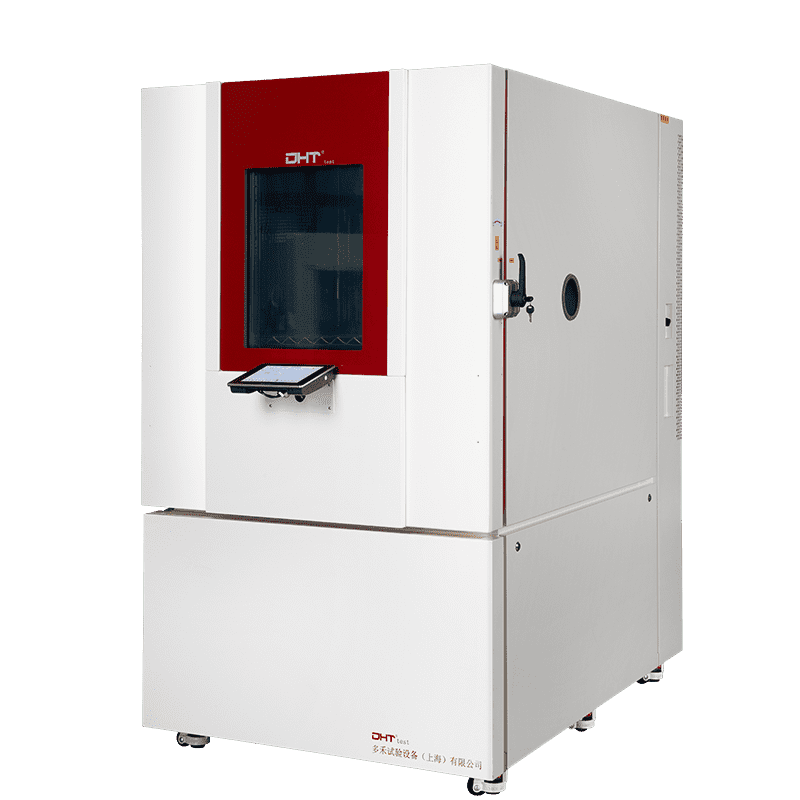A thermal chamber is a specialized piece of laboratory equipment designed to simulate a wide range of temperature and humidity conditions. Through precise control systems, it adjusts temperature and humidity parameters so that test samples can undergo long-term operation or rapid cycles within a defined environment. This allows manufacturers and researchers to evaluate product performance and lifespan under extreme climates or complex environmental conditions.
Unlike conventional heating or cooling devices, a thermal chamber not only controls temperature but also regulates humidity within a set range. For this reason, it is often referred to as a temperature and humidity chamber or humidity chamber in industrial applications. When the focus is on temperature variations and environmental simulation, it is also commonly known as an environmental temperature chamber. Despite these different names, they all point to the same core function: the chamber’s ability to provide comprehensive and versatile environmental simulations.
Why Are Thermal Chambers So Critical Across Industries?
In real-world applications, products are frequently exposed to sudden temperature shifts, humidity fluctuations, and long-term climate effects. Without prior environmental simulation testing, products may fail during customer use—leading not only to reputational damage but also to significant safety risks.
Examples of industry applications include:
- Electronics industry: Chips and circuit boards often degrade under high temperature and humidity. Thermal chambers help replicate such conditions to evaluate insulation performance and service life.
- Automotive industry: Parts and complete vehicles must endure high-temperature exposure, low-temperature starts, and thermal shocks. Thermal chambers accelerate durability and reliability testing under these extreme conditions.
- New energy sector: The charging, discharging, and safety of lithium-ion batteries are highly dependent on stable temperatures. Thermal chambers provide the precise control necessary for these critical evaluations.
- Pharmaceuticals and food industry: Drug stability and the barrier properties of food packaging materials require long-term testing under constant temperature and humidity conditions.
Clearly, a thermal chamber is not just another piece of laboratory equipment. It serves as a fundamental tool in any R&D validation system, ensuring product quality and reliability.
Core Functions and Technical Features of Thermal Chambers
- Wide Temperature and Humidity Control Range Most thermal chambers operate across extreme conditions, from ultra-low temperatures (as low as -70°C) to very high temperatures (+150°C or higher). Humidity control typically spans from 10% RH to 98% RH.
- High-Precision Control Systems Equipped with advanced sensors and Balanced Temperature and Humidity Control (BTHC) systems, these chambers ensure uniformity and stability within the test environment. This precision is particularly critical for a temperature and humidity chamber, where even minor fluctuations may affect results.
- Multiple Testing Modes Thermal chambers support various test modes, including constant condition testing, cyclic condition testing, and thermal shock testing, meeting diverse R&D requirements.
- Robust Safety Features For high-risk applications such as battery testing or chemical experiments, thermal chambers often incorporate explosion-proof designs, over-temperature protection, and automatic alarm systems to safeguard both personnel and laboratory environments.
Conclusion
In today’s fast-paced market, product competitiveness is no longer determined solely by design and manufacturing. True resilience lies in a product’s ability to remain reliable and safe under complex environmental challenges. The thermal chamber is a crucial tool for validating this resilience.
Rather than viewing it simply as a testing device, consider it a safeguard within your R&D and quality management systems—a tool that identifies potential problems in the lab before they emerge as costly recalls or safety incidents in the market.
When selecting equipment, ask yourself:
- What industry standards must my product comply with for environmental testing?
- What extreme conditions might my product face in its real-world applications?
- Does my laboratory require integration with existing testing equipment or production processes?
By answering these questions, you can better identify equipment that truly fits your needs. A well-chosen temperature and humidity chamber, environmental temperature chamber, or humidity chamber will not only enhance testing efficiency but also reduce long-term risks, shorten R&D cycles, and help your business maintain a competitive edge in a demanding global marketplace.


-2.png.webp)